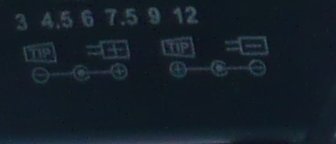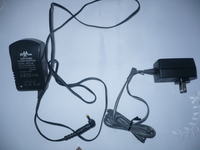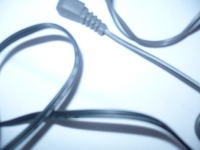Hello.
DanielR625 wrote: It's just a change of ending a I don't have a meter
As it was said: "you have a head ........., then combine".
The simplest way to determine the polarity of the supply voltage is careful observation. Find the marking on the casing of the power adapter or phone

In the event that we do not find this, things get a little more complicated, but there are still two methods:
1) invasive
2) non-invasive
Invasive consists in cutting the housing of the "American" power supply (it is glued) and observing the internal rectifier plate.
The non-invasive method requires some knowledge, caution and at least modest workshop facilities. If we have two transformer power supplies with a voltage of 110-120V on the primary side, we connect them in series and power them from the 230V mains. If we only have one, we connect a 15W/230V bulb in series with the primary winding. Now it remains to determine the polarity. We know that there is no multimeter, so an indicator sensitive to the polarity of the supply voltage must be used. We take an LED connected in anti-parallel with e.g. 1N4148 and the whole thing in series with a 680R resistor. Connect the set (power supply + light bulb) to the mains for a moment, and set the polarity with the diode. It will only light up in a specific case. And that's the end of the fun. We have obtained the answer to the question that bothers us, provided that we take far-reaching caution, because in the event of an electric shock, this knowledge will not be needed. ;)
====================================================== ===================
Topic exhausted. According to the rules of the department.
 and the other cables:
and the other cables:  the US power supply is gray and has one cable marked with a solid line, while the other one from Poland has one cable marked with a solid and a dashed line. Can someone tell me how to connect it?
the US power supply is gray and has one cable marked with a solid line, while the other one from Poland has one cable marked with a solid and a dashed line. Can someone tell me how to connect it?
 and the other cables:
and the other cables:  the US power supply is gray and has one cable marked with a solid line, while the other one from Poland has one cable marked with a solid and a dashed line. Can someone tell me how to connect it?
the US power supply is gray and has one cable marked with a solid line, while the other one from Poland has one cable marked with a solid and a dashed line. Can someone tell me how to connect it?



